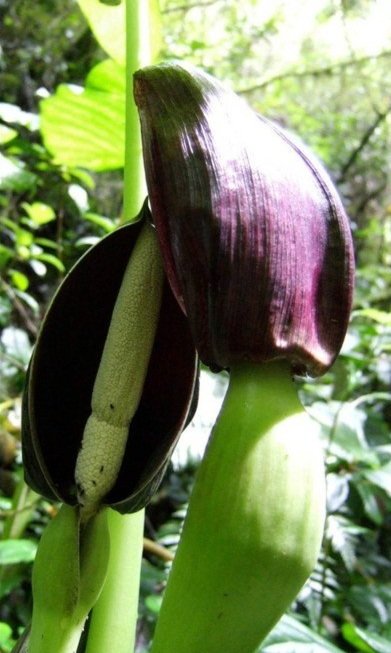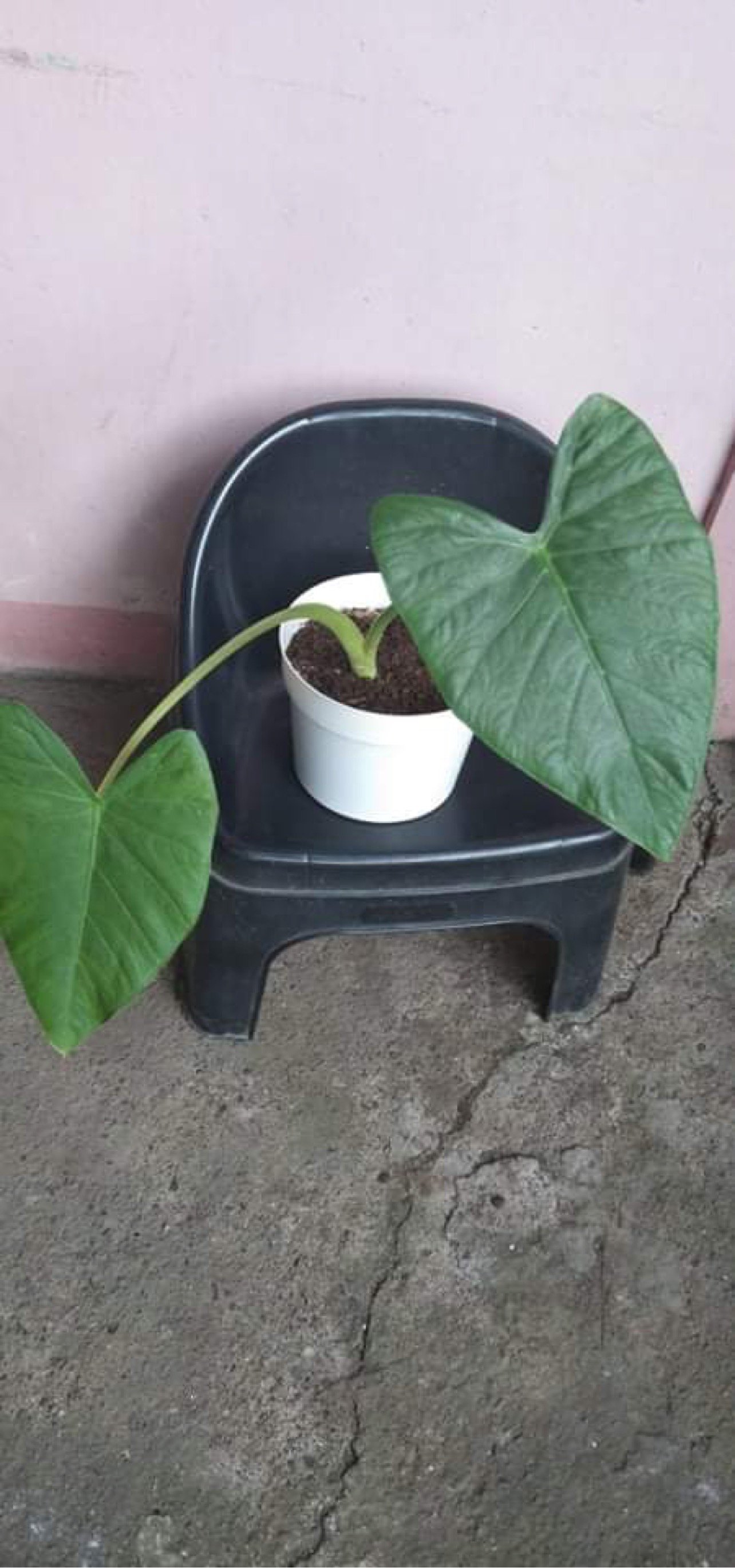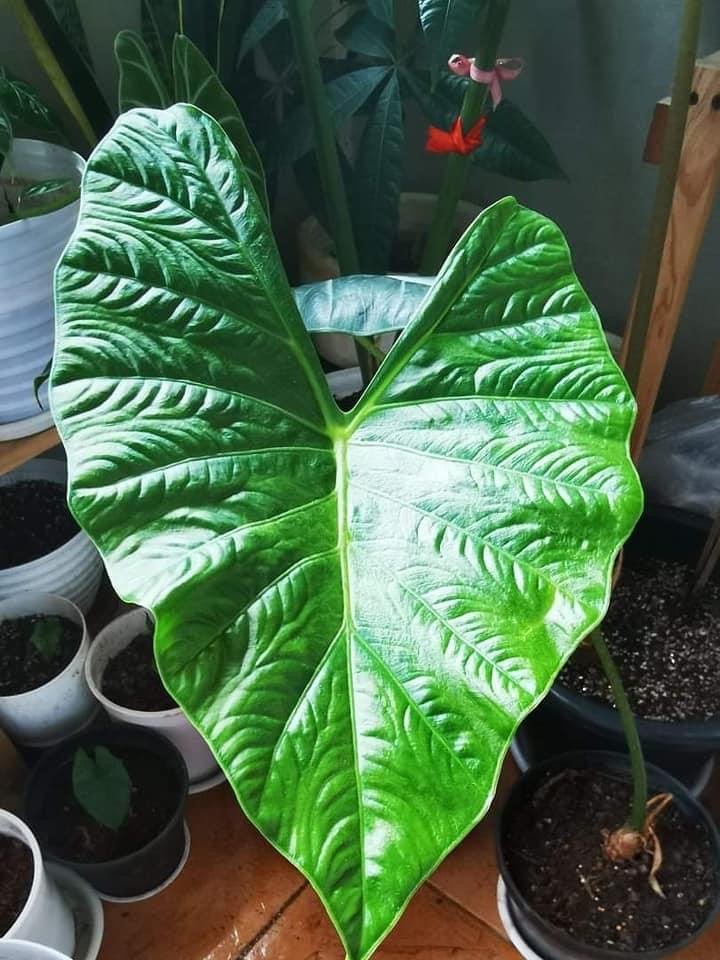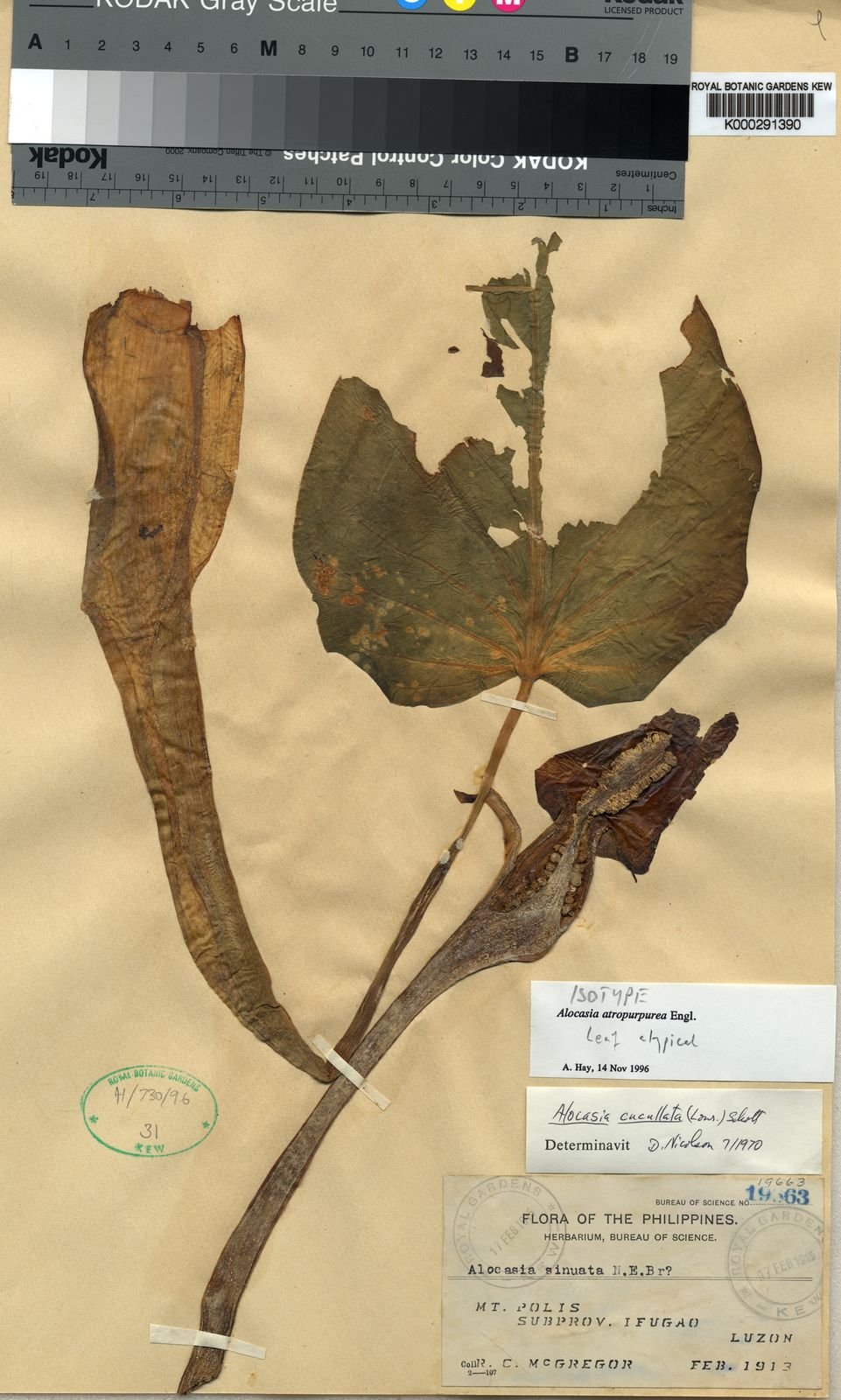ALOCASIA ATROPURPUREA
SYNONYMS: N/A
DISTRIBUTION: Philippines; Northern Luzon: Mt. Polis
CLIMATE: Tropical humid climate
Humidity is moderate throughout the year, ranging from 60% to 70%
Temperature is varies between the seasons - within the range of 48°F/9°C to 88°F/31°C during the day. Minimum temperatures never dip below 45°F/7°C
Rainy and humid season (October to May) and a dry season between June and October. The average annual rainfall is 1,200 mm
ECOLOGY: Growing on the limestone, in an open roadside habitat, as part of a larger area of karst landscape
SPECIES DESCRIPTION:
Moderately robust herb; petiole to ca. 50 cm long, sheathing in the lover third; blade membranous, ovato-sagittate, ca. 40 cm long, very shallowly peltate; anterior lobe ca. 30 cm long x 30 cm wide at base, with about 4 primary lateral veins on each side of the anterior costa diverging at ca. 45-70°, secondary veins flush on both sides of the blade, arising from the primary veins at ca. 70° and then deflected to the amrgin, not or hardly forming interprimary collective veins; posterior costae diverging at an obtuse angle; posterior lobes ca. Half the length of the anterior, rounded, with little laminar tissue on the posterior side of the posterior costae, but this confluent across the sinus; glands in the axils of the primary veins inconspicuous or absent
INFLORESCENCE:
Inflorescence arrangement (not known); spathe to ca. 14 cm long; lower spathe ca. 4 cm long, ovoid, asymmetric (due to partial connation with spadix); limb broadly oblong-lanceolate, cucullate, the basal ca. 1 cm deflected and somewhat inflated, then the rest erect, dark purple brown; spadix somewhat shorter than the spathe; female zone ca. 3 cm long, partly connate with spathe in lower third, tapering distally; ovaries globuse, rather large, ca. 2.5-3 mm diam. (dry); stigma strongly 3-4-lobed on a very short style; sterlie interstice slender, ca. 1 cm long, corresponding with spathe constriction male zone ca. 3 cm long x 1.3 cm thick (dry); synandria rhombo-hexagonal, ca. 2 mm diam., more or less capped by expanding synconnectivel appendix slightly longer than to about twice the length of the male zone, slightly constricted at junction with male zone, thence cylindric and distally abruptly tapering; infructescence unknown.
The female zone partly adnate to the spathe, the large ovaries and purple, rather inflated spathe limb appear diagnostic.
VARIEGATED FORMS: N/A
ETYMOLOGY: The specific epithet "atropurpurea" derives from the Latin words atrox, meaning "very or fiercely" and purpurea, meaning "purple," and refers to the purple color of the spathe of this species
NOTES: This apparently highly distinctive species is poorly known. The inflorescence seems large for the size of the leaves, though the latter may have been collected from conveniently small examples. The female zone partly adnate to the spathe, the large ovaries and purple, rather inflated spathe limb appear diagnostic. Vanoverbergh 3684 has the appendix relatively much longer than other specimens. Alocasia atropurpurea bears some resemblance to continental Asian Alocasia odora
Other specimens seen: Luzon, Mountain Province, Mt Polis, Celestino PNH 8014 (GH); Luzon, Bontoc subprov., Vanoverbergh 3684 (P).
CULTIVARS: N/A
HYBRIDS: N/A
REFERENCES:
Ayk Albano Personal Photos










